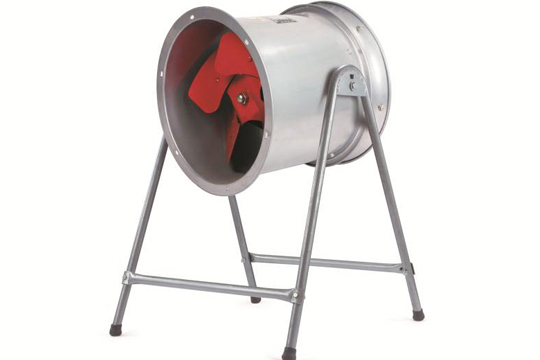The working principle of axial flow fan
2022-04-15
When the impeller rotates, the gas enters the impeller axially from the air inlet, and is pushed by the blades on the impeller to increase the energy of the gas, and then flows into the guide vane. The guide vanes turn the deflected airflow into an axial flow, and at the same time guide the gas into the diffuser, further convert the kinetic energy of the gas into pressure energy, and finally introduce it into the working pipeline. Axial fan blades work in a similar way to the wings of an airplane. However, the latter applies lift up on the wings and supports the weight of the aircraft, while the axial fan holds the position and moves the air. The cross section of an axial fan is generally an airfoil section.

The vanes can be fixed in position or rotated about their longitudinal axis. The angle of the vanes to the airflow or the vane spacing can be non-adjustable or adjustable. Changing the blade angle or pitch is one of the main advantages of axial fans. Small blade pitch angles produce lower flow rates, while increasing pitch produces higher flow rates. Advanced axial fans have the ability to change the pitch of the blades while the fan is running (similar to a helicopter rotor), thereby changing the flow rate accordingly. This is called a variable vane (VP) axial fan.

The vanes can be fixed in position or rotated about their longitudinal axis. The angle of the vanes to the airflow or the vane spacing can be non-adjustable or adjustable. Changing the blade angle or pitch is one of the main advantages of axial fans. Small blade pitch angles produce lower flow rates, while increasing pitch produces higher flow rates. Advanced axial fans have the ability to change the pitch of the blades while the fan is running (similar to a helicopter rotor), thereby changing the flow rate accordingly. This is called a variable vane (VP) axial fan.
We use cookies to offer you a better browsing experience, analyze site traffic and personalize content. By using this site, you agree to our use of cookies.
Privacy Policy



